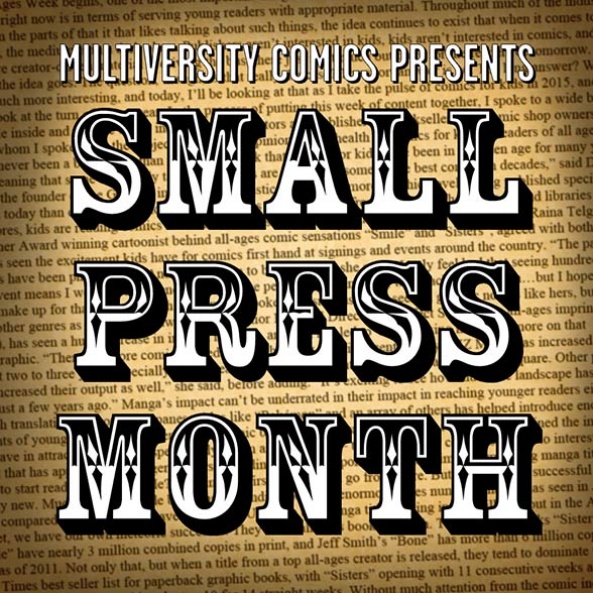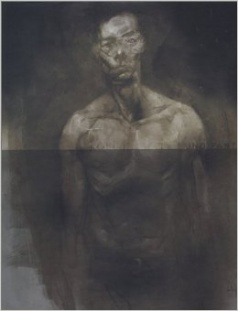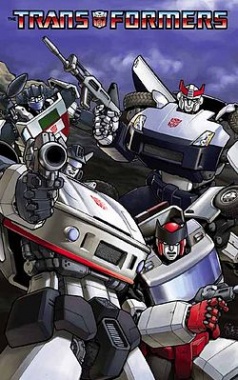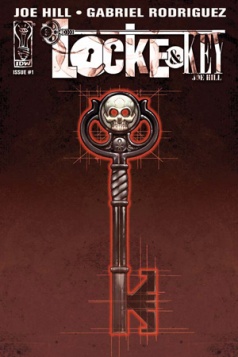
Not every small publisher in the comic business wants to become a massive force. Some, like Terry Moore’s Abstract Studio, are quite happy at their current size. Those who do want to grow don’t have many successful models to follow. Some, like BOOM! and Dynamite have made good progress, but in the last several decades only two have really gone from small to big: Dark Horse and IDW. After a review of Dark Horse’s development last week, the conclusion was that it could be emulated by other companies. Is the same true for IDW?

Idea and Design Works was founded in 1999 by four equal partners: Ted Adams, Alex Garner, Kris Oprisko, and Robbie Roberts. All of them had prior experience in comics, and they met by working for Jim Lee’s Wildstorm Productions. Based in San Diego, IDW was originally conceived as a creative service business that did art and graphic design work for various entertainment companies on a work-for-hire basis, and it actually didn’t have much of anything to do with comics.
Wildstorm had its own creative service department which had previously been run by Ted Adams, and 1999 happened to be the same year Jim Lee sold the studio to DC. DC had no interest in the creative service division and decided to downsize that department. Jim Lee didn’t want to leave the customers he had been working with high and dry, so he offered all of them to IDW. Before their offices were even set up, IDW had a full client roster.
The unexpected influx of work left IDW in a very profitable position at the end of their first year. In fact, they had so much money left over, they decided as a group to fund one new type of venture each year. Their project in 2000 was a concept for a television show. They worked on a pilot episode, but the idea never got off the ground. When they were looking for a different project in 2001, Adams’ friend Ashley Wood asked if they wanted to publish his art book. The group decided to give it a shot, and IDW Publishing was born.

Wood’s book, “Una Fanta”, didn’t actually hit comic shops until March 2002. Wood connected IDW to Steve Niles, who sent Adams some of his rejected screenplays. One called “30 Days of Night” caught his attention, and Adams paired Niles with artist Ben Templesmith to adapt it into a comic. In August 2002 it became IDW’s second book, printed as a three issue miniseries. Sales weren’t particularly good – pre-orders for the book were around a couple thousand copies. Adams believed in the book, and he used his connections in the comic market to push it. He called in favors from people at Diamond and in the comic press. He went to pillar retailers and gave them some of his backstock, asking them to read it and tell others about it.
Adams knew his efforts had succeeded when “Wizard” promoted “30 Days” as a hot book. Their article raised demand for the back issues, which were immediately in short supply. When the trade collection came out in January of 2003, it was the top selling graphic novel for the month. For a lot of readers, this unknown company had just come from nowhere. That mystique brought further interest, making the book an even bigger hit. IDW followed the success of “30 Days” with “Popbot,” the company’s second venture publishing work by Ashley Wood.

The next IDW comic came in the fall of 2003. This time, it was a comic based on the hit CSI television drama. Licensed comics were nothing new, but at the time it wasn’t the type of property that publishers normally sought to turn into a comic book. This time, whether it was because IDW still had attention from the “30 Days of Night” affair or because CSI was just that popular, the book was an immediate hit.
The publishing line continued to expand over the next few years, and more help was needed. In June 2004, Chris Ryall was hired as the company’s new Editor-in-Chief. His direction affected the way IDW was viewed by readers almost immediately. Ryall pushed harder for licenses based on toy properties, particularly “Transformers.” The comics arm of that franchise had been struggling due to internal troubles at Dreamwave, the previous license holder. When Ryall and IDW finally secured the “Transformers” license in 2005, it was considered a big coup for the still-small company. The zero issue premiered at a discount price in October 2005, and the main series began in January of 2006. Ryall and editor Andy Schmidt repeated the magic three years later with the “GI JOE” line.
Continued below
By now, it was clear that the publishing arm of Idea and Design Works was beginning to overtake the creative service side of the company. Garner and Oprisko decided they weren’t interested in being comic publishers, so Adams and Roberts began looking for a way for them to cash out. In 2007, the telecommunications company IDT showed interest in becoming a partner, and bought interest in half of the company. Over time, they came to own 75% of the company, with the remaining quarter being split between Adams and Roberts. Despite their large share, IDT has never been too interested in the decision-making process and has let IDW continue to function autonomously.
For a time, IDW was known primarily for making licensed books. They had some original content, but none of it made the splash that “Transformers” and “GI JOE” did. That changed in 2008 when Joe Hill and Gabriel Rodriguez introduced readers to their powerful epic “Locke and Key”. The ambitious book defied industry trends by growing in readership as time passed. It was also a series that had long-term potential. At least one retailer would sell as many copies of each new trade as he did of the monthly issues.

In March 2010, IDW once again did something that surprised the industry: they were the first publisher to receive premier status at Diamond since the designation was created in 1996. They were offered the opportunity because of their growing market share, and they didn’t think twice. The new deal offered them better discount options and gave them a special section in the monthly “Previews” catalog, along with a few other behind-the-scenes perks. It also cemented them as a major publisher.
When viewed all at once, IDW’s rise from a non-player to an industry leader seems more like a Cinderella story. There were several serendipitous events along the way that were out of its control but vital to its development: DC buying Wildstorm, Ashley Wood and Steve Niles having great material ready when asked, a “Wizard” writer who supported them, and license fumbling at Dreamwave. This isn’t to say Adams, Ryall, Dirk Wood, and all the other players haven’t worked hard or had good ideas. They’re great businessmen who have brought quality products to market in innovation ways.
Still, no one could deny they’ve had a lucky streak most new or small companies would envy, and their path to success isn’t one that could be easily duplicated. Whoever the next big comic publisher will be, they’ll have to find their own way to get there.






